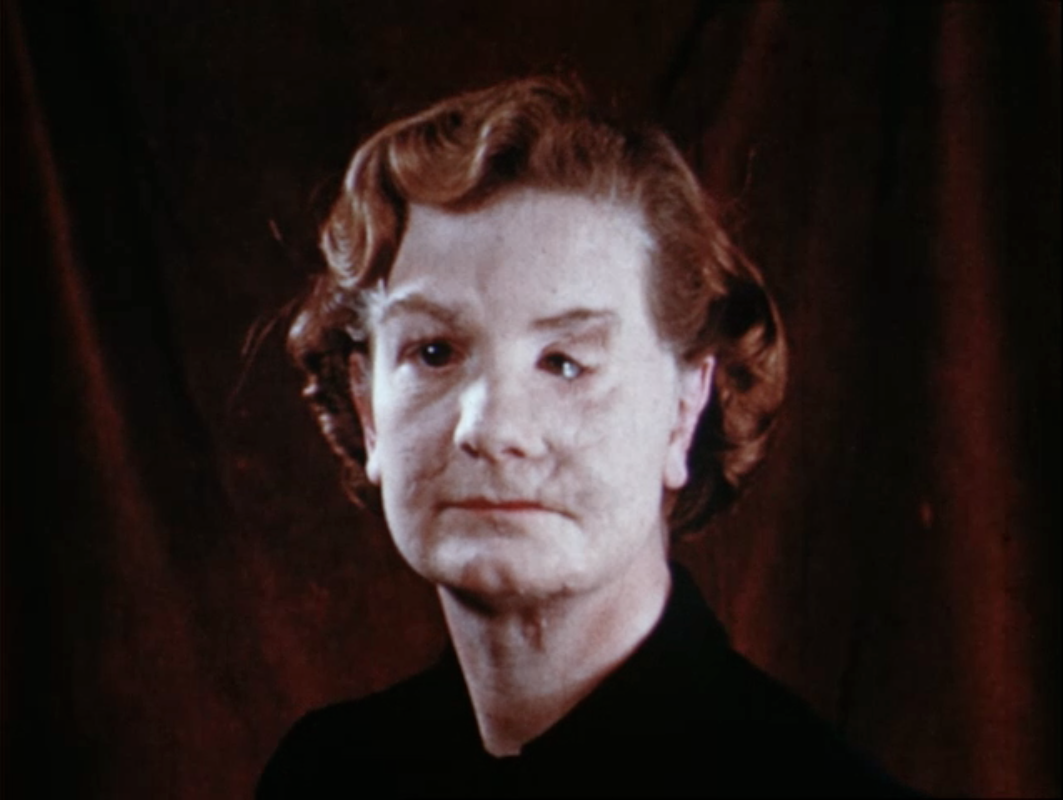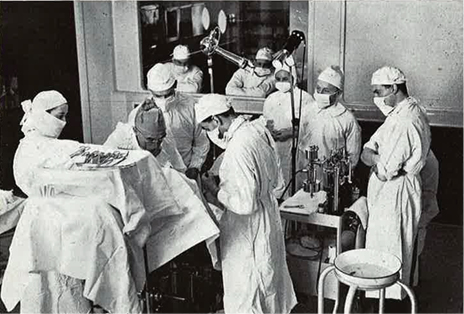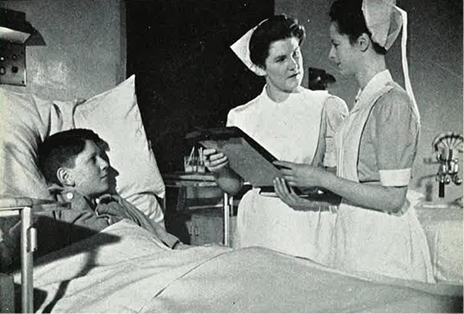When TIME/IMAGE was first introduced to the British Council’s archive film collection, we quickly noticed that amongst the culturally-focused titles there were a handful of technical medical films. We thought they were a curiosity and perhaps a little out of keeping with the rest of the archive. Unable to locate much archive material on them via our usual avenues of research, we thought that maybe they were failed experiments or not widely distributed. In short, we paid them no special attention.Recently, however, we received an enquiry about the British Council’s medical films, and thus undertook to investigate more thoroughly. What we found was rather surprising.
At the beginning of World War Two, the Medical Research Council and the Ministry of Information asked Hugh Clegg, of the Royal Society of Medicine, “to prepare articles on British social medicine in order to counteract German propaganda against Britain. German articles in the foreign medical press declared that in Britain only the rich got treated while the poor suffered in silence” (1). Given, however, the effectiveness of Germany’s propaganda techniques, he proposed establishing a more long-term operation that would “inform the medical professions in other countries of the current achievements of British medicine” (2) in the same manner that the French and Germans had been doing before the war. Officials agreed, funding was found, and the British Medical Information Service created, providing translated abstracts from British periodicals to a large number of foreign journals.
The endeavour was a great success, and one year later the British Council took over the funding and management of the operation, creating their own Medical Department which also branched out into organising exhibitions, screenings and talks both abroad and in Britain (3). By March 1941, the British Film Institute had formed a special Committee to contemplate the merits of British Council-produced “medical films with especial reference to surgery which would be useful for Higher Education” (4), to compliment their upcoming educational films. From this was born the British Council Medical Films Panel. This committee viewed medical films (predominantly surgery-orientated) from many sources to decide whether or not they were suitable for distribution abroad as well as in the UK. Surgical films before the war were scarce, often amateur affairs of mediocre quality. With the outbreak of war, the promotion of national health became significantly more important and more professional production companies were contracted to produce health films, finally bringing the genre of medical films up to speed with the rest of the documentary film movement.

By the middle of 1944, two original educational surgical films had been produced by the British Council at great expense, namely Surgery in Chest Disease and Accident Service. They were highly praised at the time by the British Medical Press upon their release, combining good photography with clear exposition, and were shown quite widely. Four years later they were described as “excellent films on medicine, carefully made by film experts collaborating closely with doctors. But the purpose of these films is not clear; beautifully made, they have little use…” (5).
Indeed, though the considerable merits of the widespread countering of the German claims in numerous medical journals are clear, the purpose of these titles is not – particularly considering the expense involved when one film alone could easily cost the modern equivalent of £250,000. It seems inconceivable today that the films were anywhere near as successful as the journals on a cost-for-cost basis.
It seems that British Council ultimately came to similar conclusion, as they went on to produce only a couple of technically-focused medical films in the next few years, including Artificial Pneumothorax (an “excellent film… technically first class.” (6)) and the six-part colour series Techniques in Plastic Surgery (described as “of a very high order.” (7)), which were both received well. In spite of this, these medical titles, although few in number, were amongst the first of their kind, demonstrating the merits of utilising high-quality films as surgical teaching aids and encouraging others to produce them and follow their example.
The British Council’s medical film output was not limited to educational items, however. Several items relating to health which highlighted the excellent provisions made for the sick or injured under the welfare state were made between 1941-1946, such as Student Nurse and Out of the Night. These titles were thought to be of good quality, certainly, but they were not as groundbreaking as the educational surgical films and are much more in keeping with the rest of the British Council’s filmic output. These more propaganda-orientated films were undoubtedly distributed much more widely, and were surely viewed as much more effective in countering German propaganda than the technical titles. Indeed, one representative of the British Council in Egypt claimed such films were too effective, and that many who were viewing them had begun to see Britain as something of a far-off utopia (8).
The war ended in 1945, and with it came a shake-up of government departments. The Ministry of Information was replaced by the Central Office of Information, and between 1946-1950 it slowly assumed responsibility for all government-produced films. By 1956, the British Council Medical Department, no longer having the resources of the now-largely-defunct Film Department, was no longer producing or widely distributing films. It’s work is once more limited to arranging lectures, running a library of medical literature, and producing the British Medical Bulletin, pamphlet Medicine in Britain, and the British Medical Book List (9).
– SARAH
1. Clegg, Hugh; International Relations in Medicine; November 1969; Proc. Roy. Soc. Med Volume 62, p41
2. Clegg, Hugh; International Relations in Medicine; November 1969; Proc. Roy. Soc. Med Volume 62, p42
3. Note that the British Council’s activities, for various reasons, did not extend to the USA.
4. National Archive File BW 4/18; Report on Educational Films – From the Director of the British Film Institute; 24th March 1941
5. Stanford, Brian; The Evolution of the Medical Film in Britain; 1947; in ‘Documentary News Letter’, Jan-Feb, Vol.6, No.55.
6. S.F.T.; Medical Film Notes; December 1948, in The Post Graduate Medical Journal, Vol. XXIV, No.278.
7. Evans, A.J.; Film Review: Techniques in Plastic Surgery; 1950; British Medical Bulletin, Vol. 7, No.1-2, p127-8
8. Feedback form, National Archive file.
9. Clark, Hilda; The Work of the British Council Medical Library and its Relation to Other Activities of the Council; Bull Med Libr Assoc. 1956 April; 44(2): p115–120


